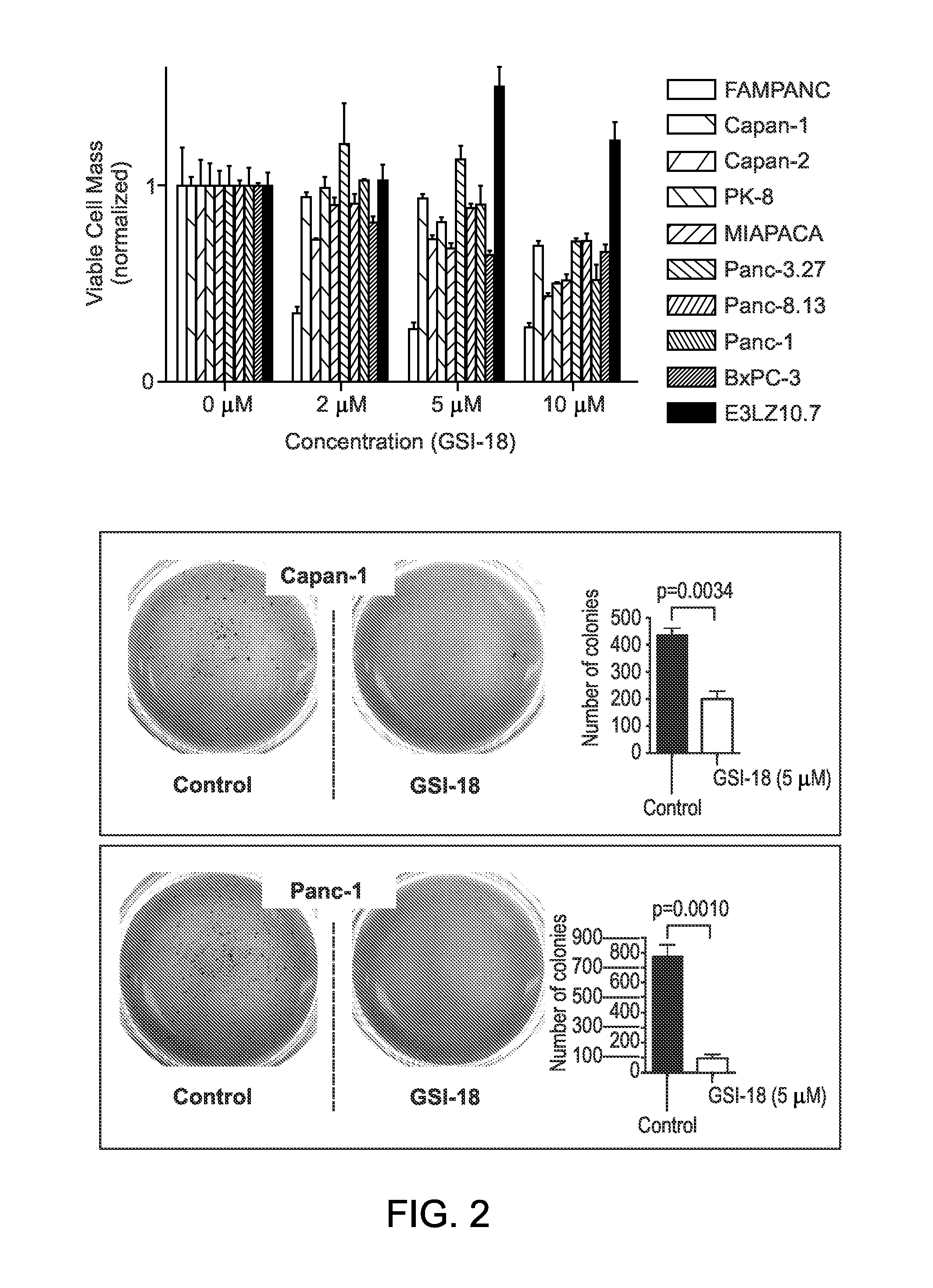Cancer treatment with gama-secretase inhibitors
a gama secretase inhibitor and cancer treatment technology, applied in the field of cancer treatment with gama secretase inhibitors, can solve the problems of affecting the survival rate of patients, so as to improve the efficacy of therapeutic modalities, avoid or reduce adverse or unwanted side effects, and reduce the effect of toxicity
- Summary
- Abstract
- Description
- Claims
- Application Information
AI Technical Summary
Benefits of technology
Problems solved by technology
Method used
Image
Examples
example 1
7.1. Example 1
Effects of Notch Activation and Notch Inhibition on Cancer Stem Cell Population in Medulloblastoma Cell Cultures
Abstract
[0382]Small subpopulations of stem-like cancer cells uniquely capable of supporting long-term neoplastic growth have been identified in both solid and hematopoetic tumors. Cancer stem cells, however, are relatively resistant to standard therapies, thus new strategies will be needed to remove this functionally critical cellular fraction in tumors. It was shown that cancer stem cells in the brain tumor medulloblastoma have elevated levels of Notch activity, and require this pathway for survival and proliferation. Activation of Notch2 in medulloblastoma cultures increased the cancer stem cell fraction as assessed by expression of CD133 and nestin, and by Hoechst dye exclusion (side population). In contrast, pharmacological inhibition of Notch using gamma-secretase inhibitors depleted cancer stem cells via reduced proliferation, neuronal differentiation a...
example 2
7.2. Example 2
Notch Pathway Blockade Inhibits Glioblastoma Growth by Targeting Cancer Stem Cells
Introduction
[0409]There are more than 41,000 people diagnosed with primary brain tumors each year in the United States (33), and GBM are the most common malignant brain tumors in adults (34). More than 80% of GBM patients die within 1 year (33, 34). There is emerging evidence showing that a small population of cancer stem cells (CSCs) within neoplasms is responsible for long-term tumor propagation (35). Several groups also demonstrated that such stem-like cells exist in brain tumors, including GBMs (35-40). Two CSC markers, CD133 and side population, have been used to prospectively isolate a small percentage of cells in brain tumors uniquely able to generate tumor neurospheres and xenografts (36, 38, 39, 41). In addition, GBM propagated as neurosphere more accurately replicate the infiltrating growth patterns seen in primary tumors (40, 42).
[0410]Activation of the Notch signaling pathway ...
PUM
| Property | Measurement | Unit |
|---|---|---|
| volume | aaaaa | aaaaa |
| diameter | aaaaa | aaaaa |
| diameter | aaaaa | aaaaa |
Abstract
Description
Claims
Application Information
 Login to View More
Login to View More - Generate Ideas
- Intellectual Property
- Life Sciences
- Materials
- Tech Scout
- Unparalleled Data Quality
- Higher Quality Content
- 60% Fewer Hallucinations
Browse by: Latest US Patents, China's latest patents, Technical Efficacy Thesaurus, Application Domain, Technology Topic, Popular Technical Reports.
© 2025 PatSnap. All rights reserved.Legal|Privacy policy|Modern Slavery Act Transparency Statement|Sitemap|About US| Contact US: help@patsnap.com



